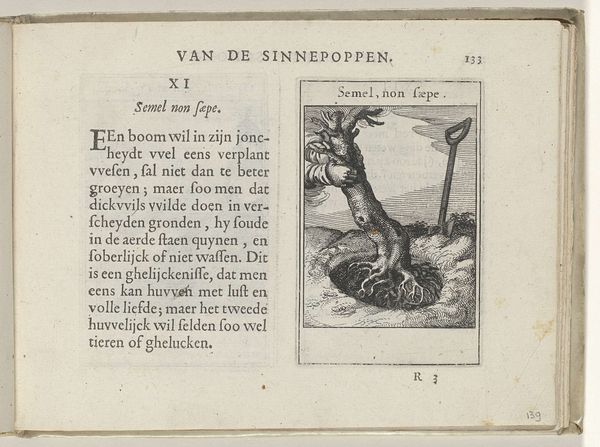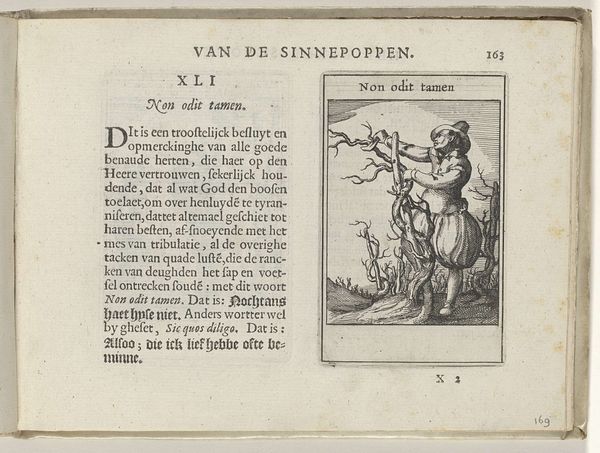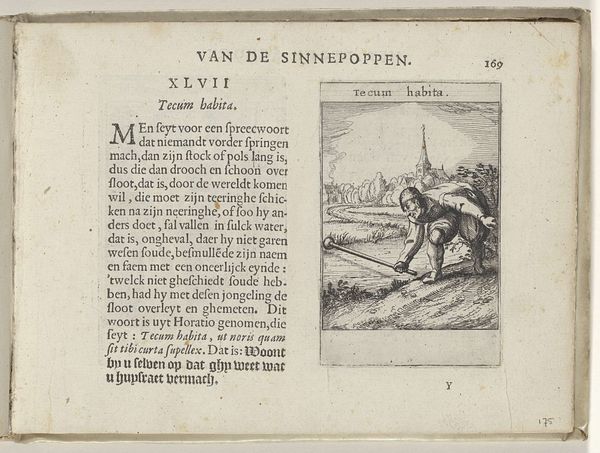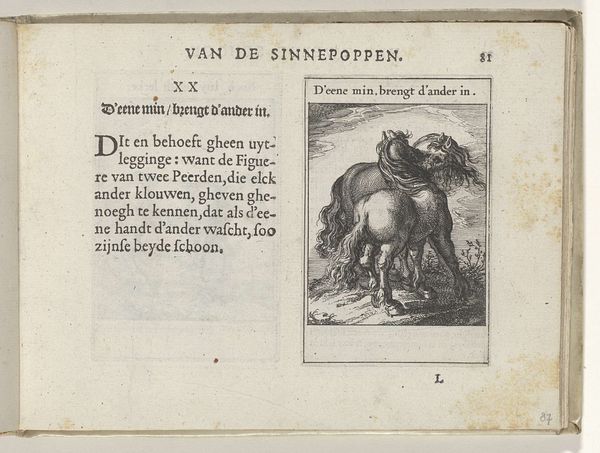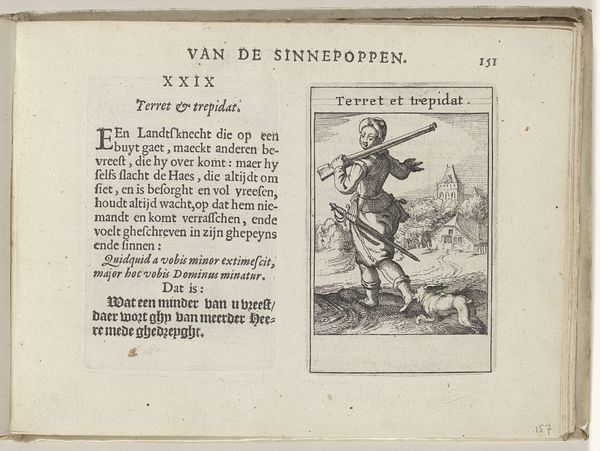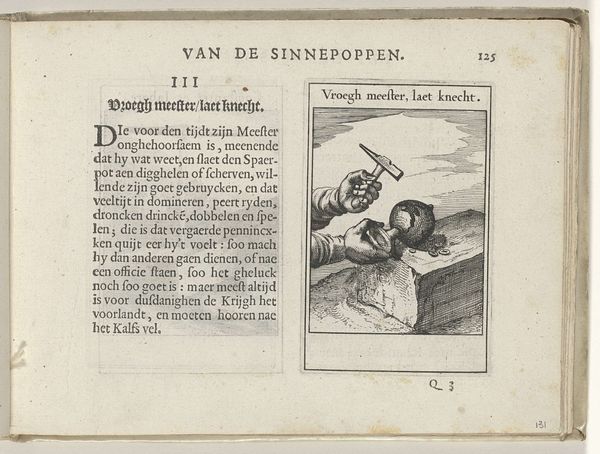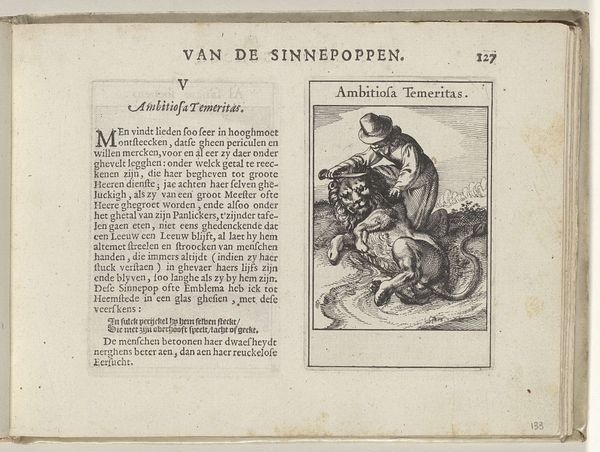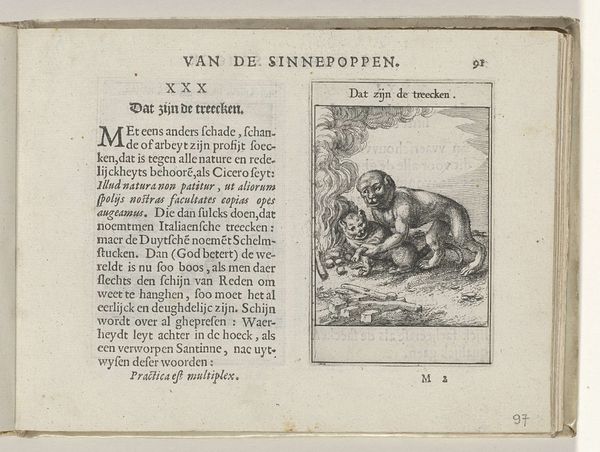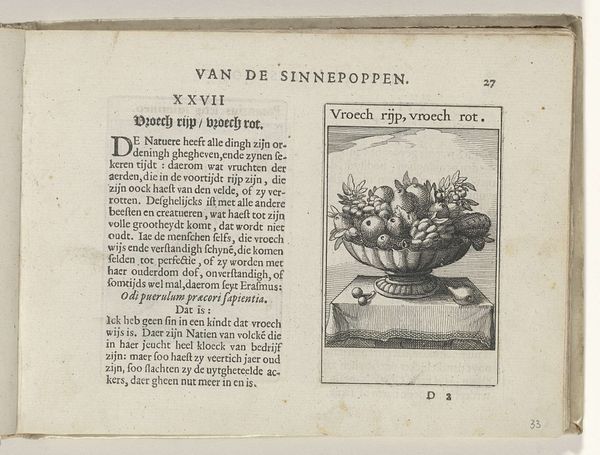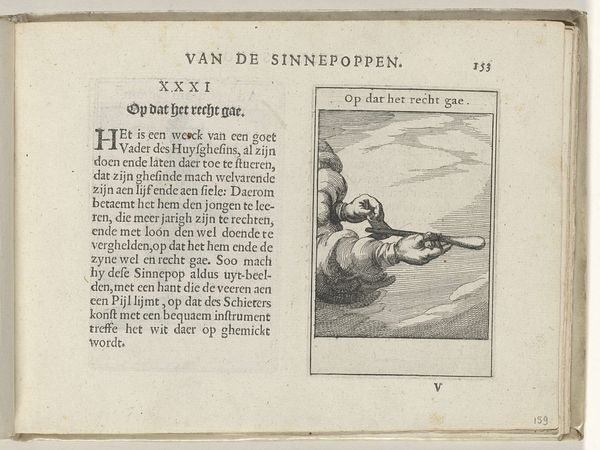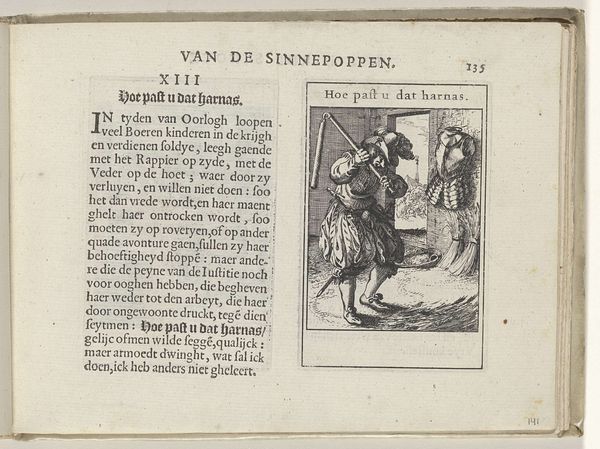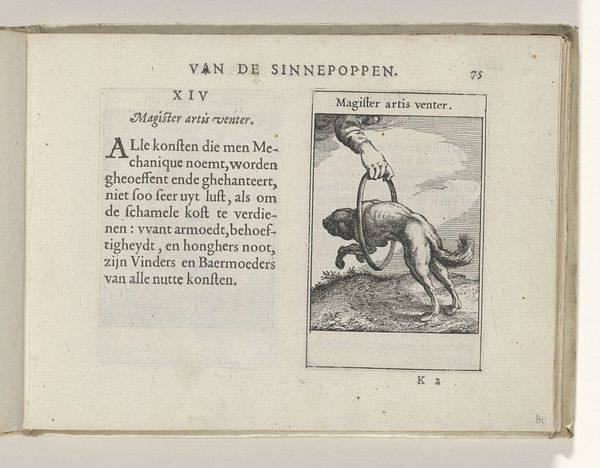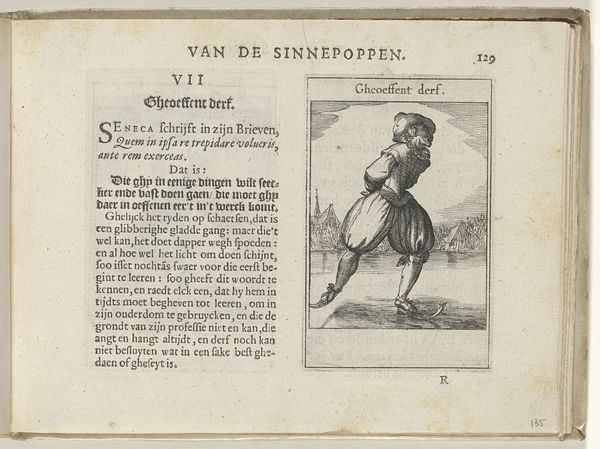
print, engraving
#
animal
#
dutch-golden-age
# print
#
11_renaissance
#
engraving
Dimensions: height 137 mm, width 188 mm, height 95 mm, width 60 mm
Copyright: Rijks Museum: Open Domain
This engraving by Roemer Visscher, made around the turn of the 17th century, presents a scene teeming with rabbits, a powerful symbol for fertility and abundance. The Latin inscription, 'Ex foecunditate ubertas', reinforces this idea, suggesting that from fertility comes plenty. Now, this motif of the rabbit as a symbol of fecundity is by no means unique to Visscher's time. Consider the ancient Roman association of rabbits with Venus, the goddess of love and fertility. This connection echoes through the centuries, surfacing in various forms of art and folklore. In some cultures, the rabbit even becomes a symbol of rebirth, linked to the cycles of the moon and the changing seasons. The image of the rabbit, therefore, operates on a level beyond mere representation. It taps into our collective memory, resonating with ancient beliefs and primal associations. It's a potent reminder of the cyclical nature of life. Its continued reappearance across cultures and eras demonstrates its enduring power to evoke the deep subconscious understanding of nature's bounty and regenerative force.
Comments
No comments
Be the first to comment and join the conversation on the ultimate creative platform.

